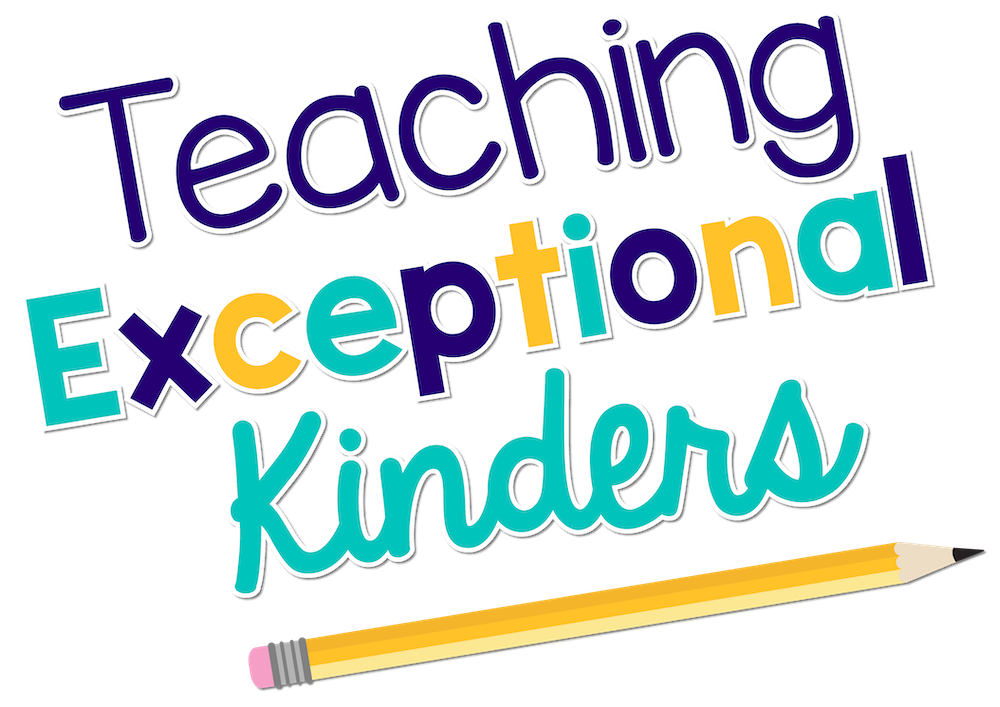A Blueprint for Managing Kindergarten Behavior
When we find ourselves struggling with behavior management in kindergarten, the issue often lies much deeper than we realize. We might think a fancy new behavior chart will be the answer when the real issue is the framework of our behavior management strategy. In this post, I’m going to talk about the importance of creating a blueprint for managing kindergarten behavior.
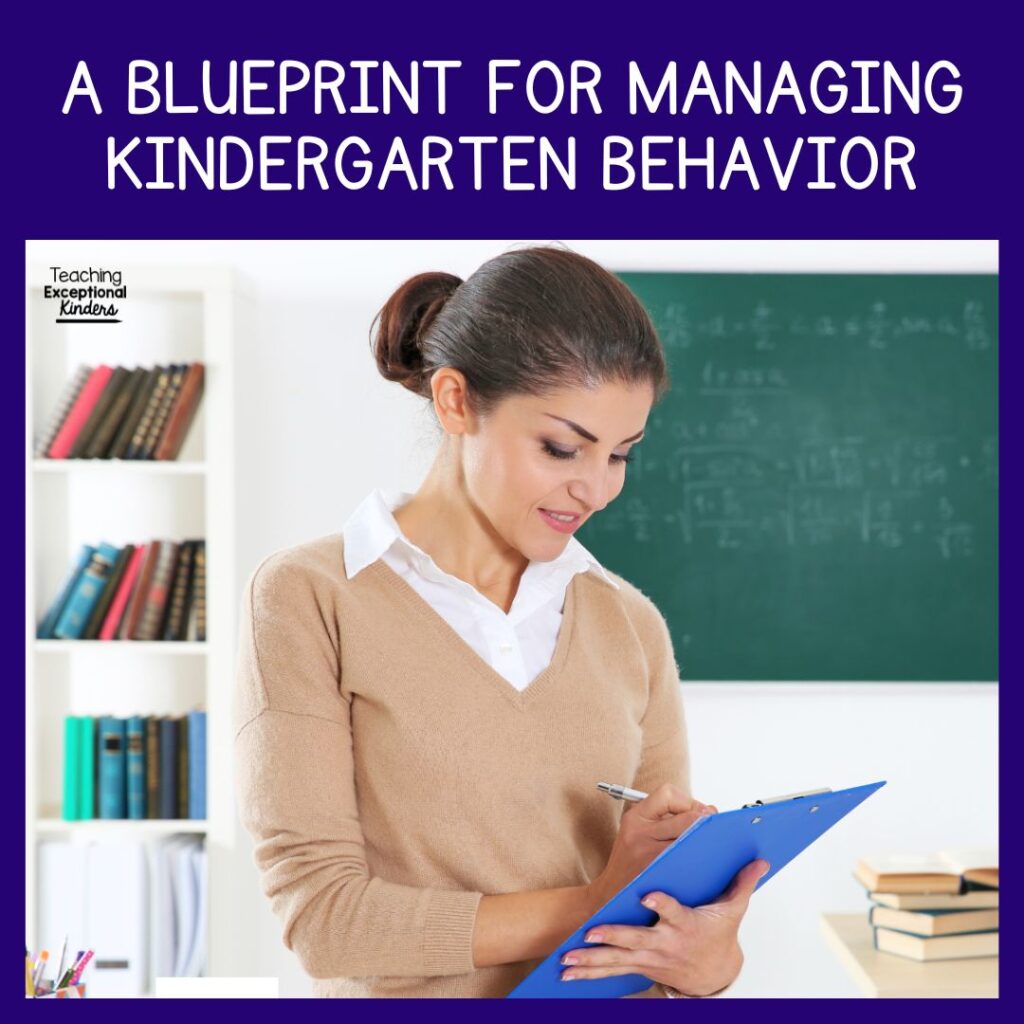
Why You Need a Behavior Blueprint
You wouldn’t dive right into building a home without a set of blueprints! The same is true for building a behavior management system for your classroom. It provides a much-needed structure on which you can build effective classroom management systems. You’ll find that a behavior blueprint will allow you to actually teach instead of dealing with chaos all day long!
There are some situations when a behavior blueprint is especially important:
Situation #1: You’re a Brand New Teacher
As you prepare for your first year of teaching, it’s a great time to create a plan for your classroom management. By focusing on the most important elements of managing kindergarten behavior, you’ll have a solid framework that will get your year off to a great start and have a tool kit to pull from as behaviors come up throughout the year.
Situation #2: You’re New to Teaching Kindergarten
As you can probably guess, behavior management in kindergarten is a lot different than in other grade levels. Kindergarten is truly unique because many students have no school experience before they enter Kindergarten. If you find yourself teaching kindergarten for the first time, it's essential to create a blueprint for what behavior management will look like in your classroom.
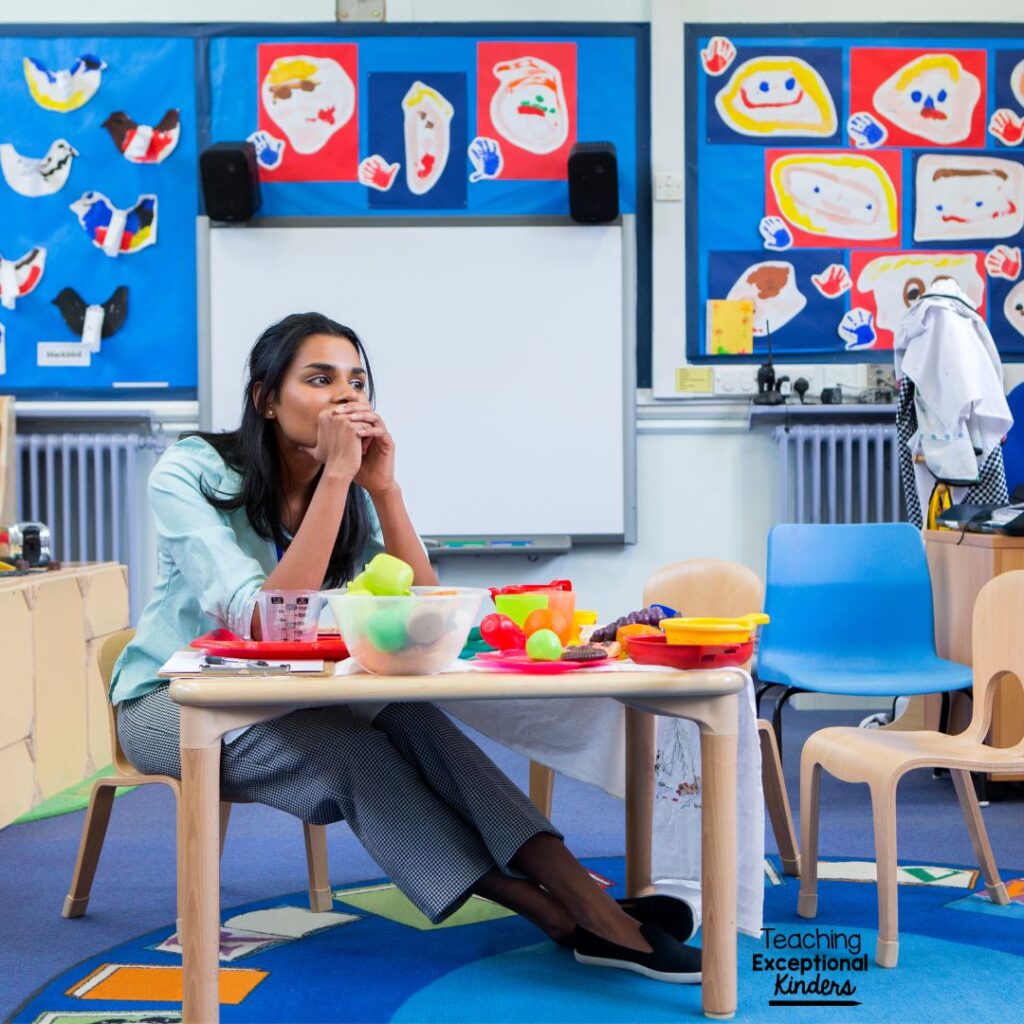
Situation #3: You’re Overwhelmed by Your Current Class
It’s never too late to go back to the drawing board! If you find yourself going home completely drained every afternoon (or dreading going to work in the mornings), it might be time to reassess your behavior management system.
Situation #4: You’d Like to Add to Your Toolbox
You might be in a situation where your class is running pretty smoothly this year. However, you know that every year is a different story. You’ve decided to take a step back and review your behavior management system. By creating a blueprint for managing kindergarten behavior, you’ll be adding to your toolbox for future groups of students.
Blueprint for Managing Kindergarten Behavior
Building a behavior blueprint doesn’t mean picking out a cute printable behavior chart on Teachers Pay Teachers and calling it a day. That would be like buying your bathroom paint before your house plans are finished; you won't know how many bathrooms your home will have or how large they will be. A behavior blueprint ensures that the strategies you use will serve the overall plans you have for your classroom management.
There are three important elements that you need to take into consideration when creating a blueprint for managing kindergarten behavior.
1. Build Behavior Systems
First, you’ll want to focus on building behavior systems that create consistent expectations for your students. An effective behavior system will be something that you can stick with all year long. It will reinforce positive behavior and address negative behavior while providing structure and routine for your students.
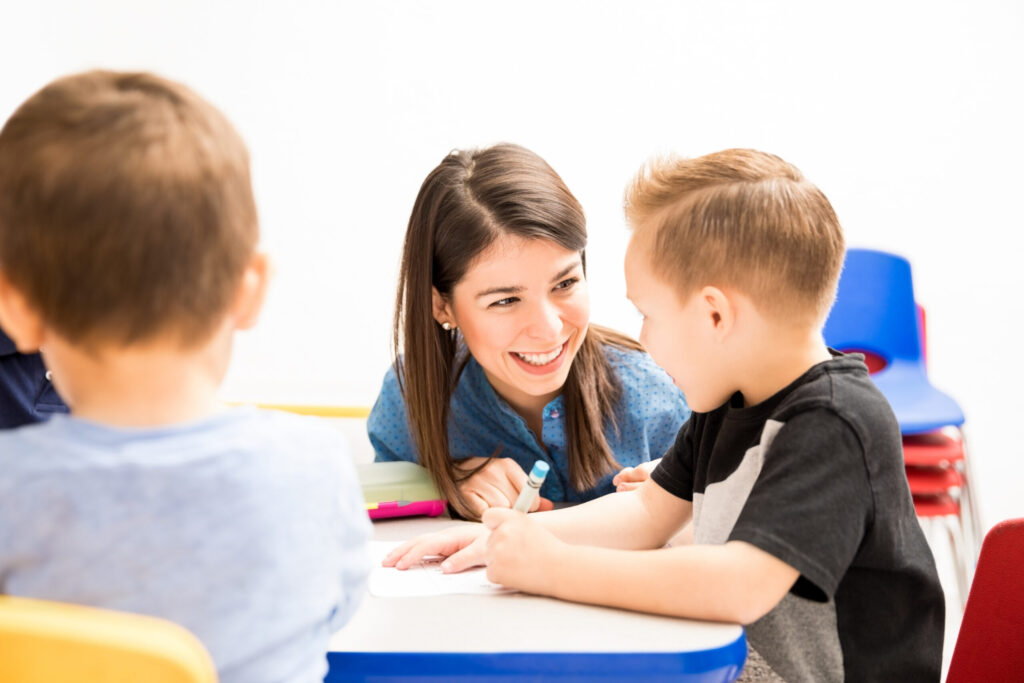
You might make adjustments to the implementation of your behavior system based on seasonal challenges or individual student needs. However, the core focus of your behavior system should remain the same. Just like the original structure of your home will stay the same even though you update the paint color.
2. Build Relationships
The next part of your behavior blueprint will be building relationships with your students. You can’t expect kids to follow the directions of people they don’t like! Relationships are a key component of classroom management, so developing these relationships should be a focus of your plans for managing behavior. Find ways to connect with your students in positive ways early in the school year, before it’s time to redirect negative behavior.

You’ll also want to consider how you can improve communication with the families of your students. Parent and guardian relationships are crucial to a successful behavior management system. You don’t want your only communication with parents to be when a significant behavior has occurred. Be sure to work positive parent communication into your blueprint, as well.
3. Build Independence
Think about some of the behaviors that you deal with daily in kindergarten:
- Arguments over small things
- Excessive talking during work time
- Interruptions while you’re working with small groups
- Various task avoidance behaviors
What is at the root of all of these behaviors? The need for students to be more independent! Kindergarten students have likely never been in a setting with such a high student-to-teacher ratio. They aren’t used to waiting for adult attention or solving problems without adult intervention.

A behavior blueprint needs to focus on helping students become more independent throughout the school day. As they learn how to problem solve and regulate their own emotions more independently, that will carry over into all aspects of the school day. Students will be able to work more independently, which will mean fewer behaviors for you to address throughout your daily routine.
Creating a Kindergarten Behavior Blueprint
We’ve talked about why a behavior blueprint is important and the three essential elements it should include. Now you might be wondering how you should put it all together into a cohesive behavior management plan. I’ve got you covered!

Introducing The Kindergarten Behavior Blueprint course! This course is set up in a workshop model and walks you through all three of the essential components of a behavior blueprint: Building effective behavior systems, building relationships with your students and their families, and encouraging your students to build their independence.
Inside this course, you’ll find practical tips and proven strategies, along with the print-and-use resources you’ll need to implement those strategies right away. Check out this video to learn more about the Kindergarten Behavior Blueprint course and decide if it would be a good fit for you.
Are you ready to create a behavior management system that works all year long? Just fill out the information below to join the waitlist for the Kindergarten Behavior Blueprint course. You’ll be notified as soon as it’s live!
Save These Tips for Managing Kindergarten Behavior
Be sure to save this post if you’d like to come back to it later. Just add the pin below to your favorite teaching board on Pinterest. You’ll be able to find these tips for managing kindergarten behavior whenever you feel like your classroom could use a reset.
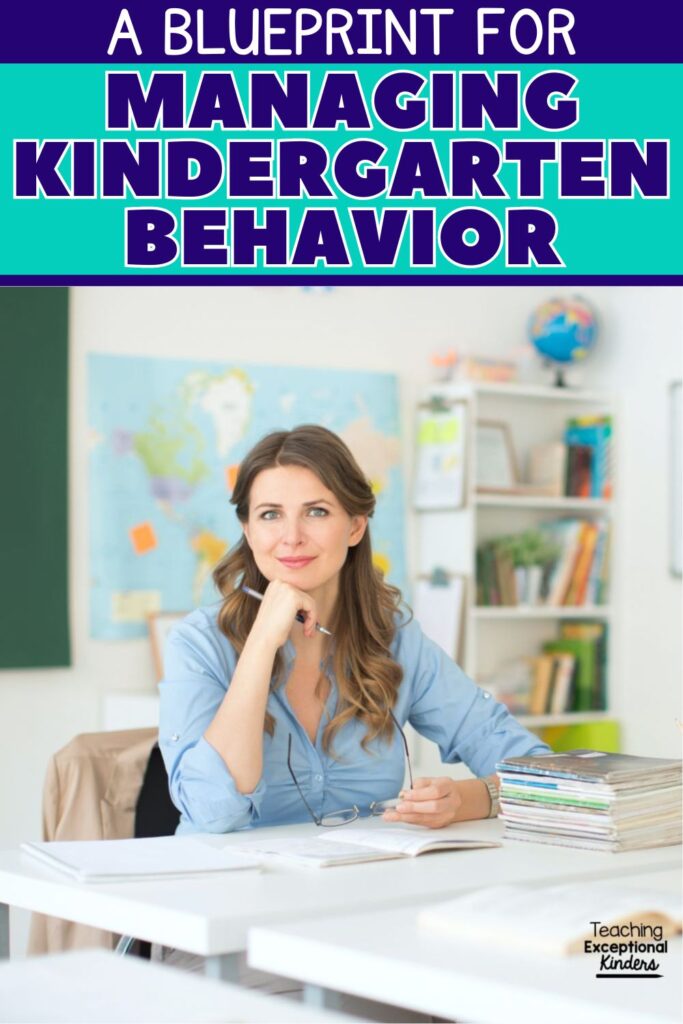
Amy
SITE DESIGN BY LAINE SUTHERLAND DESIGNS

